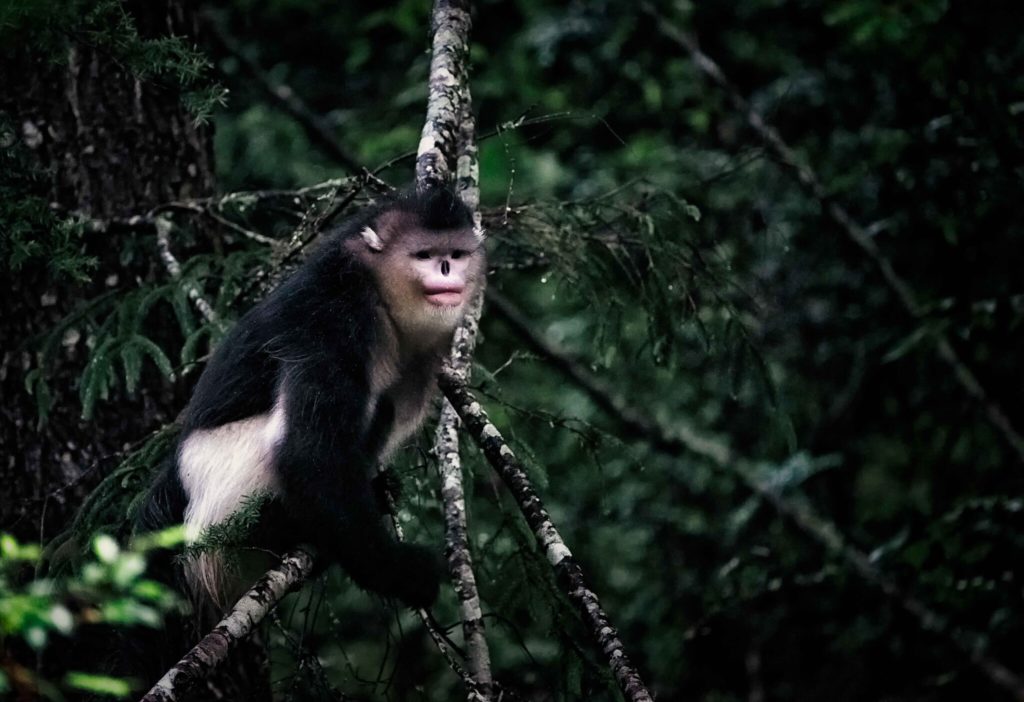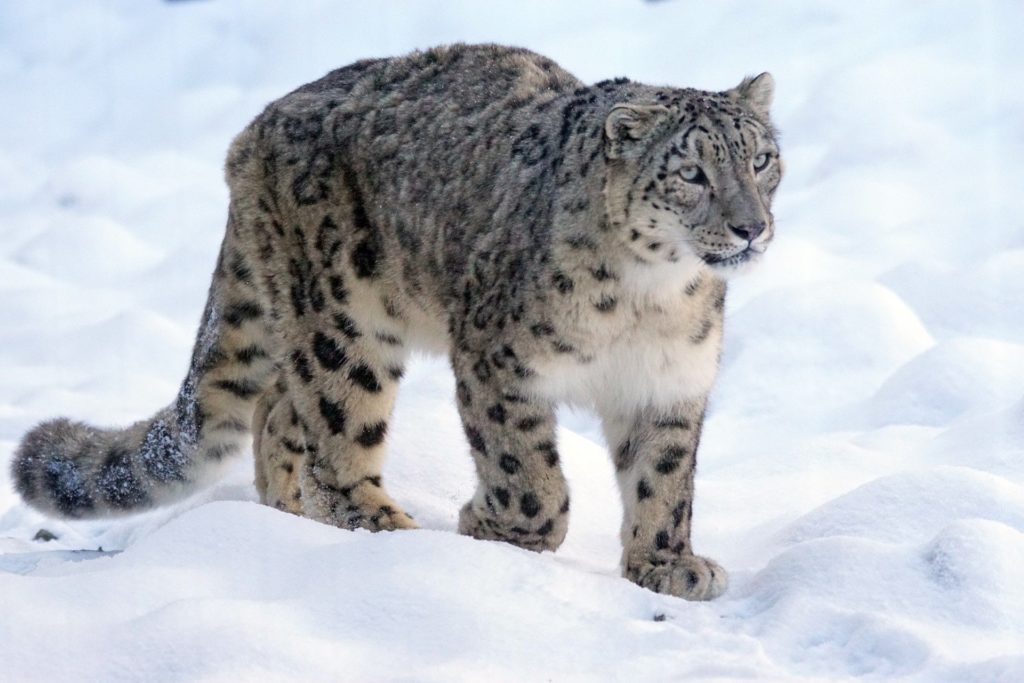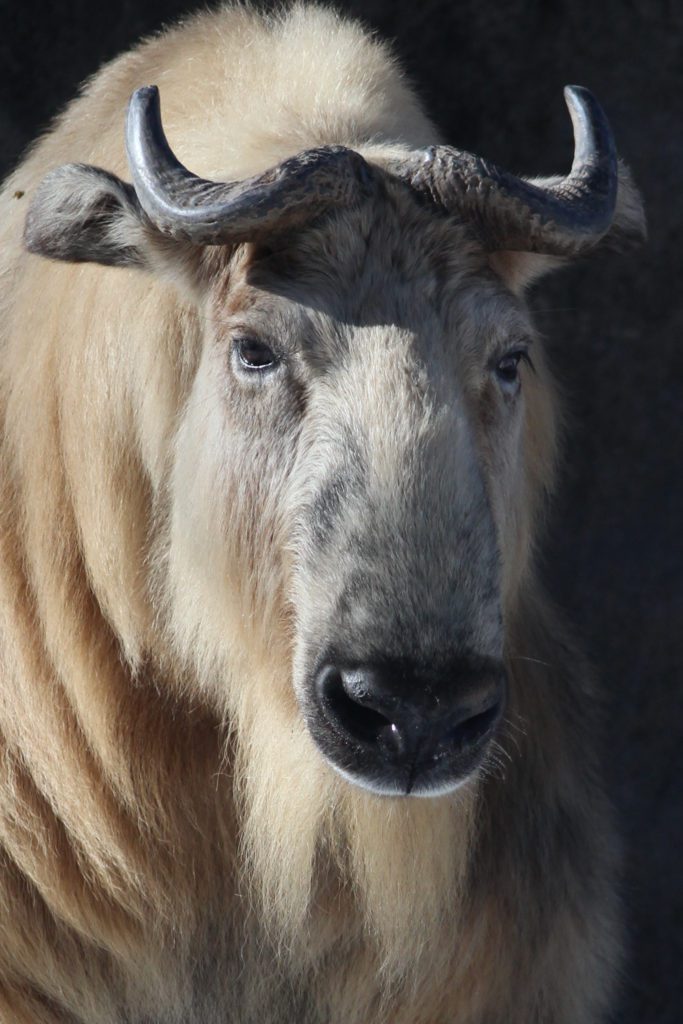by Shelby Wyzykowski
In 1933, when British author James Hilton published the novel Lost Horizon, much of the world was in the midst of the Great Depression, and in some countries there were signs of movement towards another large-scale war. The book became a best-seller in part because it provided a welcome respite from reality. The focal point of the story is a serene paradise called Shangri-La, a fabled land hidden amongst the snow-capped peaks of the Himalayas that is blissfully free of sickness, poverty, conflict, or struggle. The tantalizing tale of a mystical utopia with no shortage of security, beauty, peace, and excited weary readers and piqued their imaginations.
Sadly, for humankind, the enchanting world of Shangri-La is now, and will likely always be, a dream. However, for some fauna species of Central Asia with homes nestled high up amid the rugged and intimidating terrain of the frigid Himalayan mountains, life does seem to imitate literary art. At great heights within the boundaries of this mysterious and remote part of the world, they have carved out a little piece of heaven for their very own. But, unlike the idyllic scenario presented in Hilton’s fictional novel, living in a real-world paradise is not without its challenges.
Paradise Found for the Black Snub-Nosed Monkey?

The black snub-nosed monkey, the rarest monkey in the world, lives at a higher altitude than any other primate besides humans. The species makes its home at roughly 10,000 to 15,000 feet above sea level in the majestic mountain forests of the Yunnan region in southern China. Lush, Eden-like valleys are their primary residence for much of the year. Here there is an ample supply of food (in the form of leaves) at their fingertips.
However, when winter arrives, they make a move that, at first, seems a bit counterintuitive. For the coldest months of the year, the monkeys choose to live in the highest part of their range. They brave the bone-chilling temperatures higher in the Himalayas because their favorite food, a particularly nourishing variety of lichen, is more abundant there. At high elevations, the monkeys rest on sunny rock outcrops to take advantage any available solar heat. This sensible tactic, along with huddling in groups of up to eight, helps the species survive.
Protecting the Black Snub-Nosed Monkey
Due to poaching and deforestation, the black snub-nosed monkey is considered endangered – even more endangered than the beloved panda. Conservation groups are hoping to make a change for the better as they work to find ways for the monkeys and their neighboring human communities to coexist. One notable development involves a forest monitoring campaign where some local villagers are trained as forest rangers who patrol the monkey habitat, searching for old poaching traps and installing infrared cameras to monitor and protect the small population. These positive and productive efforts are exactly what the black snub-nosed monkeys need in their ongoing struggle to survive in their mountain habitat. If these conservation initiatives are successful, the monkey population has an excellent chance of rebounding and recovering.
Snow Leopards Thrive at the Top

You might think that it’s lonely at the top, but snow leopards are very happy living a solo lifestyle. Mature adults live alone, high up (at elevations of 9,800 to 14,700 feet) in the steep and rocky mountains across Asia. They are perfectly designed to live in such a harsh and rugged environment. Their strong build allows them to effortlessly scale steep slopes, and their powerful hind legs give them the ability to leap six times the length of their body. Their long tail provides them with the agility and balance that is needed to traverse icy, slippery ground. It also does double duty as a soft, furry blanket that can be wrapped around the leopard’s body to provide warmth when sleeping. Appropriately referred to as the “ghost of the mountains,” they have an amazing knack of blending in with their frosty environment.
Threats to Snow Leopard Survival
Snow leopards thick whitish-gray spotted coat with black rosettes blends in seamlessly with the snowy, jagged cliffs and ravines. However, this gift that provides them with virtual invisibility has also been a curse. In illegal wildlife trade, poached snow leopard pelts bring a high price. Unfortunately, it’s not only law-breaking hunters that set their sights on the cats. As local human development has increased, livestock grazing has expanded into the snow leopard’s range. Argali and Blue Sheep, the snow leopard’s natural prey, have become harder to find (humans hunt these sheep as well); the leopards are forced to prey on livestock for sustenance. In retaliation, snow leopards are often killed by local farmers and herders.
Snow Leopard Conservation
This magnificent cat’s fate might seem a bit grim, but their future is brightening. In the Eastern Himalayas, conservationists are working with local communities to monitor and protect snow leopards. Predator-proof livestock pens are being installed to reduce the retaliatory killings, and in an attempt to spread the word about the leopard’s plight, leopard awareness programs are being presented to school students and the mountain communities at large. So, things are definitely looking up for the graceful and ghostly snow leopard.
Meet the Takin

The takin almost appears to be an imagined creature from a Star Wars movie, and it would by no means look out of place if it were roaming the windswept tundra of the ice planet of Hoth. Yet this ungulate, which looks like a compilation of a goat, muskox, and a gnu, is quite real.
Weighing up to 770 pounds, you would think that such a bulky bovid could never survive at mountain elevations as high as 14,000 feet. This nimble creature, which is most closely related to wild sheep, is an expert at maneuvering up and down steep rocky slopes. Takins have also adapted to the challenging weather of their lofty, chilly sanctuary. The species’ massive, moose-like snout has large sinus cavities that warm up the cold mountain air. Without this high-elevation adaptation they would lose a large amount of body heat simply by breathing. Another physical adaptation this mammal relies upon to combat the weather is an oily bitter substance they secrete through their skin. The secretion coats the takin’s fur and acts as a natural raincoat during storms and periods of fog.
The Takin: Sacred and Endangered
Though this remarkable animal’s existence is generally unknown in the Western world, the creature is revered in Asia. The takin is sacred to Tibetan Buddhists, and it is also the national animal of the Kingdom of Bhutan, the landlocked country in the Eastern Himalayas, between China and India. Despite their elevated status, takins are endangered or vulnerable throughout much of their range. Habitat destruction is a major threat, and hunters poach them for food and fur.
In response to the takin’s dire situation, China’s government has taken steps to ensure that its national treasure will survive. The takin has been given the country’s highest legal protection, and, in 2013, in cooperation with The Nature Conservancy, the Laohegou Land Trust Reserve was established. This tract of land links several existing reserves in China that together sustain a wide array of animals, including the takin, golden snub-nosed monkey, and the giant panda. These linked protected areas, along with some recently established programs promoting ecotourism and eco-friendly agriculture, are slowly transforming the dream of a successful and sustainable takin sanctuary into a reality.
Shangri-La: Fictional or Real Place?
It’s unfortunate that Shangri-La is only a fictional fabrication found within the pages of a book. Yet even though it does not exist in our physical world, Shangri-La does seem to exist for us in spirit. In a pivotal scene in Lost Horizon, one of the novel’s key characters, the High Lama of Shangri-La, foretells of a time when the nations of the world will tear each other apart through war. He proclaims that, after the chaos has finally come to an end, all that will remain are Shangri-La’s messages of wisdom, harmony, and hope for the future. His one great wish is to see this hopeful and harmonious way of life spread throughout the entire world.
In our real world, a genuine spirit of hope for the future is visible in the joint efforts of conservation organizations, governments, and local Himalayan communities as they work together to save endangered mountain species. Their efforts are showing the snub-nosed monkey, snow leopard, and takin the kindness and respect that they so rightfully deserve. These three extraordinary animals have found their own special Shangri-La. And as the self-appointed caretakers of this planet, it is up to us to continue to help them to flourish in their wintry nirvana for many years to come.
Shelby Wyzykowski is a Gallery Experience Presenter in CMNH’s Lifelong Learning Department. Museum staff, volunteers, and interns are encouraged to blog about their unique experiences and knowledge gained from working at the museum.
Related Content
Waddling in a Winter Wonderland: How Penguins, Humans, and Other Animals Traverse Ice and Snow
How Do Trees Survive the Winter?
Ice and Snow: The Effects of Temperature
Carnegie Museum of Natural History Blog Citation Information
Blog author: Wyzykowski, ShelbyPublication date: January 12, 2022
